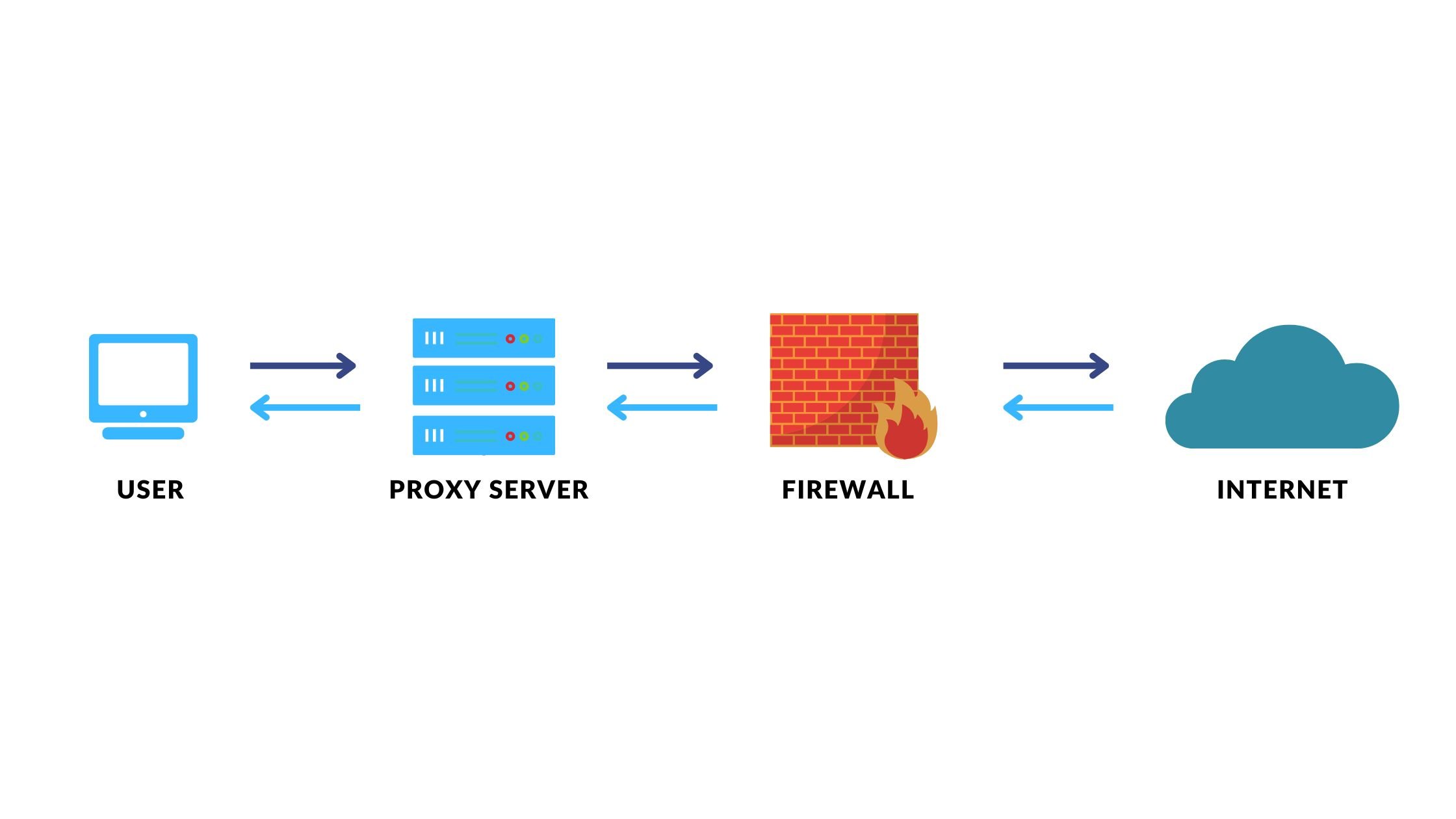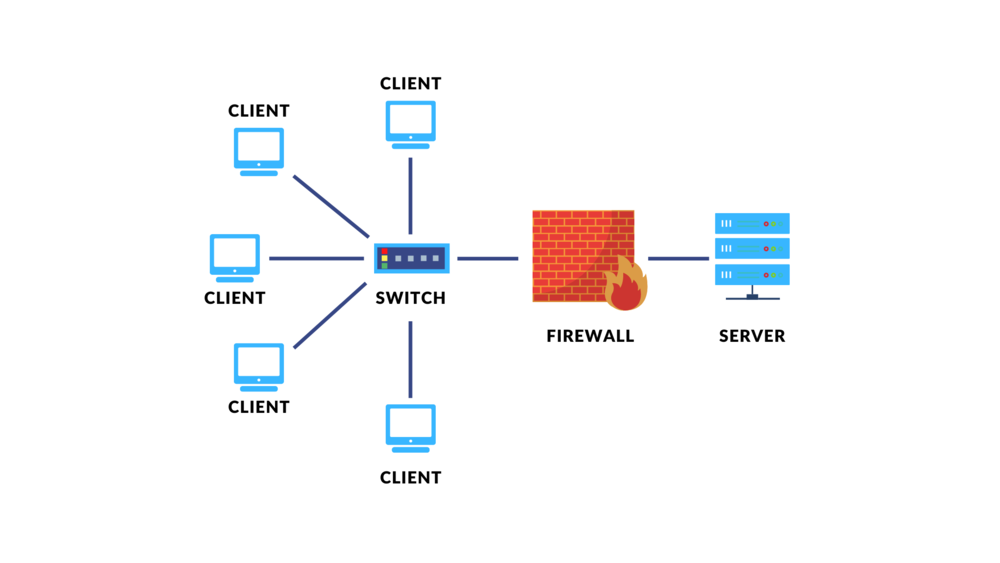Proxy Servers: Everything You Need To Know
In addition to work emails, online shopping, social media, 24x7 news, and cute pictures of dogs, the Internet comes with many inherent risks, including data breaches, identity theft, and financial loss. Many of these risks can be mitigated by using security measures to ensure privacy and data security while you use the Internet. Commonly used examples include Virtual Private Networks (VPNs), Tor, and proxy servers.
In this blog post, we take a look at proxy servers, covering topics such as the definition of a proxy server, how they work, types of proxy servers, when and why to use proxy servers, and how to set it up.
What Is A Proxy Server?
A proxy server is a server application that functions as an intermediary between a client, which requests a resource, and a server, which provides that resource. When the proxy server receives a request from the client, it evaluates the request, forwards it to the server, and completes the required network transaction.
The function of a proxy server is to simplify or control resource requests and to provide functionalities such as load balancing and security. Additionally, by requesting resources on behalf of the client, proxy servers can mask the true origin of the request to the resource server, improving privacy.
For example, proxy servers are commonly used as a gateway separating end users from the Internet such that all web traffic goes through the proxy server rather than directly to the websites you visit. So, when you want to visit a website, your computer sends a request for the web page to the proxy server instead of requesting it directly. The response to that request comes back to the proxy server, which forwards the data received from the website to your computer.
How Does A Proxy Server Work?
As a general principle, a proxy server sits between you and the resource you are trying to access and requests resources on your behalf. It accepts the request from the client and returns a response based on the following process:
It checks the local cache and if the requested data is available, the proxy server itself provides the requested information to the client.
If the local cache does not have the requested data, it forwards the request to the destination server.
The proxy server forwards the response received from the server as well as caches the data.

A proxy server is primarily used for two main functions. First, to keep the client behind it anonymous. As you may already know, every device on the Internet has a unique Internet Protocol (IP) address, which serves as an address for the Internet to know where requests are coming from and where to send the requested information. A proxy server is like another computer with its own unique IP address sitting between your device and the server.
And second, to speed up access to a resource through caching. When you send a request, say a web request, it first goes to the proxy server, which makes the web request on your behalf, receives the response from the web server, and forwards the web page data to your device so that the web page is visible on your browser. But if the same request had been made earlier then the data will be available in its cache. So it doesn’t have to forward the request to the destination server, which speeds up access to the resource.
Types of proxy servers
There are a wide variety of servers categorized based on traffic flow, anonymity level, application, etc. The following are the most common types of proxy servers:
1. Forward Proxy Server
A forward proxy server is a type of proxy that controls access to content on the Internet. It receives requests from users on an internal network and passes them on to the Internet via a firewall. A forward proxy is typically configured to either ‘allow' or ‘deny' a user's request. If the request is allowed, then the proxy follows the usual process of checking the cache and then forwards the request to the destination server. But if the request is denied, the proxy returns an error or redirect message.
2. Reverse Proxy Servers
A reverse proxy server is essentially the reverse of a forward proxy, i.e. it passes requests from the Internet via a firewall to users in an internal network. Reverse proxies are generally used to monitor and restrict access to servers containing sensitive data. They are also configured to either ‘allow' or ‘deny' a user's request and follow the usual process to either complete the request or return an error or redirect message.
3. Anonymous Proxy Servers
Anonymous proxies are the most common type of proxy servers. They conceal the client's IP address and high-anonymity proxies do not identify themselves as proxies to web servers. Additionally, anonymous proxies also routinely change IP addresses when making requests to web servers. Thus they are able to not only hide the client’s IP address and geographical location but also avoid targeted marketing and allow access to web content censored in the user's location.

4. Protocol Proxy Servers
Protocol proxy servers or protocol gateways are proxy servers that operate at the application layer of the network protocol stack. As the name suggests, protocol proxies are designed to work with only specific protocols or applications. Protocol proxy servers are typically used to provide additional functionality and security, or to enhance the performance tailored to the specific protocols they support.
Common examples of protocol proxy servers include:
HTTP (Hypertext Transfer Protocol) proxy server, which handles HTTP traffic,
FTP (File Transfer Protocol) proxy server, which facilitates FTP file transfers between clients and FTP servers.
DNS (Domain Name System) proxy server, which intercepts DNS requests made by client devices and forwards them to DNS servers.
SMTP (Simple Mail Transfer Protocol) proxy server, which handles email traffic.
5. Access Proxy Servers
An access proxy server operates as an intermediary between client devices and backend servers or services. Unlike forward proxies, which handle client requests and forward them to the internet, access proxy servers forward client requests to backend servers within a private network.
Access proxy servers are typically used for handling authentication and authorization for client requests, load balancing, content caching and compression, and to handle SSL/TLS encryption and decryption.
Benefits of using a proxy server
Using a proxy server is beneficial for organizations in a number of ways; the key benefits include:
Enhanced Security
Proxies conceal your IP address and other location information and act like a firewall between the user and the Internet. This helps add a layer of security that protects the user and the internal network from unauthorized access via the Internet.
Improved Privacy
By concealing your IP address and location information, proxies protect you from the collection of IP-specific data. Additionally, it also helps you avoid getting inundated with unwanted ads while browsing the world wide web.
Usage Policy Enforcement
Proxy servers can be used to filter content and block access to websites that violate the organization’s Internet usage policy. Additionally, insecure websites and websites that propagate malware, adware, and illegal content can also be blocked, which will also improve overall security.
Access Location-Specific Content
Proxy servers can be designated an address associated with another country. This opens location-restricted content by making your device appear to have a local IP address no matter where you are in the world. This can have many use cases. For instance, a marketer can research the web content, pricing, and search engine optimization of the market in one country, even though they may be located in a different country.

When Is A Proxy Server Needed?
Proxy servers are used to solve a variety of problems. The following are some of the most common use cases for proxy servers:
Security and content filtering. Workplaces can use proxies to filter content and secure their networks.
Handle traffic surges. Organizations use proxies to handle huge web traffic surges and reduce the time required to access requested resources.
Bypass geo-restrictions. Proxies are also used to access web resources restricted to certain geographic locations, which is useful for market research, search engine optimization (SEO), etc.
Traffic tunneling. Proxies can also be used to tunnel web traffic, i.e. to transmit private network data and protocol information through the public network by encapsulating the data, as in the case of VPNs.
What Is The Difference Between A Proxy Server And VPN?
Proxy servers and VPNs share many similarities nevertheless they are more different than similar. Both act as intermediaries between the client and the server, protecting the client by concealing its IP address and location information.
The main difference between proxy servers and VPNs lies in their operation and supported protocols, which determine their privacy and security capabilities. Typically, a VPN is configured at the system level so all traffic passes through it. On the other hand, Proxy servers are usually configured individually, i.e. each user must configure their proxy connection settings separately to direct traffic through the proxy.
Generally, VPNs are more secure since they create an encrypted tunnel between the client and the outside network, establishing a private and secure connection. Whereas, a proxy server merely changes a user's IP address and can't encrypt data on its own. Since proxy servers, on their own, do not offer secure connections, they are cheaper and faster than VPNs.
How To Set Up A Proxy Server?
The process of setting up a forward proxy server depends on the operating system and web browser. Before you begin, you will need your Local Area Network (LAN) settings, the proxy server's address, port number, and other related information.
Click the following links to see the detailed instructions for setting up proxies for the respective operating systems and web browsers.
Setting up other types of proxy servers requires extensive technical knowledge and expertise. You will need to consult all the documentation and resources related to the specific proxy server, necessary software, and dependencies. If you are not adept at networking, it is advisable to seek assistance from experienced network administrators.

Conclusion
Proxy servers are useful networking applications that can do a lot more than forwarding requests. They can act as firewalls, web filters, and improve security and privacy as well as network performance. Effective implementation of a proxy server helps keep your users and internal network safe from unauthorized access via the Internet.
Are you looking for help with installing, managing, or upgrading your server? Reach out to us by clicking the button below for assured, timely, and cost-effective server-related work.











